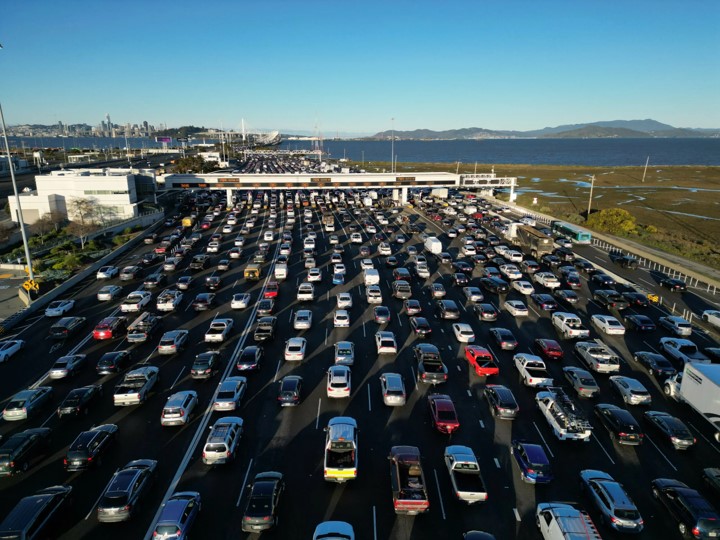How a 4-Day Workweek Can Save Bay Area Workers Time and Money
The Bay Area is notorious for its high cost of living, especially when it comes to transportation. According to a recent study by Chamber of Commerce, San Francisco workers have the most expensive commute in the country, spending an average of $12,650.66 annually or $49.04 per day. Fremont workers are not far behind, ranking second with an annual cost of $12,048.32 or $46.34 per day. The national average, by comparison, is $5,748.05 or $22.11 per day.
Not only are Bay Area commuters paying a hefty price for their travel, but they are also spending a lot of time on the road or on public transit. The same study found that San Francisco workers spend 58.4 minutes per day commuting, while Fremont workers spend 57.6 minutes. The national average is 52.8 minutes.

Flex Work works
These numbers paint a bleak picture of the challenges that Bay Area workers face every day as they try to balance their work and personal lives. However, there may be a solution that can help them save both time and money: a four-day workweek.
A four-day workweek is an alternative work arrangement that reduces the standard 40-hour workweek to 32 hours, with the same pay and the same productivity expectations. Instead of working five eight-hour days, employees work four eight-hour days and enjoy a three-day weekend.
This idea may sound too good to be true, but it has been tested and implemented by several companies in the Bay Area and beyond, with positive results. For example:
- Emtrain, a San Francisco-based human resources tech startup, adopted a four-day workweek in June 2021 and found that it increased employee satisfaction, retention, and productivity.
- Buffer, a social media marketing company headquartered in San Francisco, experimented with a four-day workweek in May 2020 and decided to make it permanent after seeing improvements in employee well-being, engagement, and output.
- ThredUp, a clothing resale website based in Oakland, switched to a four-day workweek in July 2020 and reported that it boosted employee happiness, creativity, and collaboration.
These companies are not alone in their pursuit of a shorter workweek. According to a survey by Future Forum, a research consortium backed by Slack, 72% of knowledge workers want to work four days or less per week after the pandemic.
Saving Time, Money, and Sanity
So how can a four-day workweek benefit Bay Area workers who are struggling with their commutes? Here are some possible advantages:
- Reduced transportation costs: Working one less day per week means saving one-fifth of the money spent on gas, tolls, parking, bus fares, or train tickets. For San Francisco workers, this could amount to $2,530 per year or $9.81 per day. For Fremont workers, this could mean $2,410 per year or $9.27 per day.
- Reduced carbon footprint: Driving less means emitting less greenhouse gases that contribute to climate change. According to the Environmental Protection Agency, the average passenger vehicle emits about 404 grams of carbon dioxide per mile. Assuming an average commute distance of 15 miles each way for Bay Area workers, working one less day per week could reduce their carbon emissions by 1.21 metric tons per year or 4.67 kilograms per day.
- Reduced traffic congestion: Fewer cars on the road means less traffic and faster travel times for everyone. According to INRIX, a transportation analytics company, San Francisco ranked as the second most congested city in the U.S. in 2019, with drivers wasting 116 hours per year or 28 minutes per day in traffic. Fremont ranked as the ninth most congested city, with drivers losing 89 hours per year or 22 minutes per day in traffic. Working one less day per week could reduce these numbers by 20%.
- Reduced stress and fatigue: Commuting can be stressful and exhausting, especially for long-distance or public transit commuters who have to deal with unpredictable delays, crowded vehicles, or unsafe conditions. According to a study by International Journal of Environmental Research and Public Health, commuters experience higher levels of stress and lower levels of happiness than non-commuters. Working one less day per week could alleviate some of this stress and fatigue and improve mental health.
- Increased time for personal activities: Having an extra day off every week means having more time for hobbies, family, friends, exercise, relaxation, or anything else that brings joy and fulfillment. According to a study by Harvard Business Review, working less can increase employees’ happiness and well-being without impacting productivity.
It’s just better all around
We discussed flex working environments in a previous blog post. In conclusion, a four-day workweek can be a win-win situation for both employers and employees in the Bay Area who are looking for ways to cope with the high cost and inconvenience of commuting. By reducing work hours, companies can increase employee satisfaction, retention, and performance, while employees can save money, time, and energy, and enjoy a better work-life balance.
